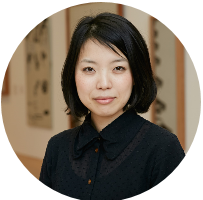SEA PROJECT Event2
Performance and Talk by Heri Dono
+ Report of the SEA PROJECT Research in Indonesia Part 2: Report of the SEA PROJECT Presentation 3
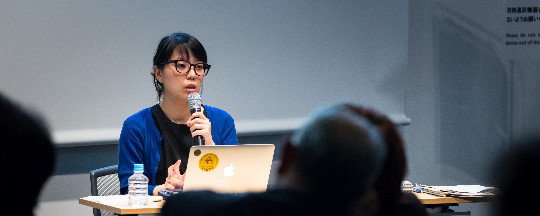
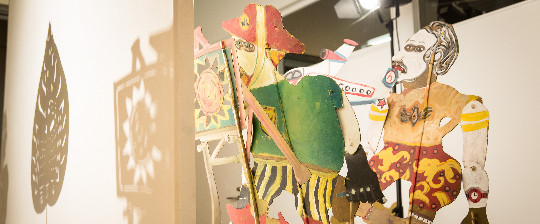
Collectives in Indonesia
During my ten-day research in Indonesia in November 2015, the most characteristic was that a large number of artists were also engaged in activities as a collective or group beside each of their individual work. A collective is a group in which several artists come together and make a single piece or carry out a project collectively. Here, I will introduce some of the activities of collectives that I learned about through our research in Jakarta, Surabaya, and Yogyakarta.
First, I will talk about Ruangrupa, a collective based in Jakarta whom Ms. Kataoka mentioned as well in her talk. Ruangrupa is a collective founded in 2000, so it has a long history of sixteen years. A variety of artists are a part of it, and it is structured in a way that several other collectives exist within Ruangrupa. Furthermore, Ruangrupa is both the name of the collective as well as the name of the place where it carries out a wide range of activities including art exhibitions, the OK Video Festival, workshops for curators, and its own radio broadcast station. Its engagements are based on the premise that art should not be only for a limited number of people but should be more open and accessible to a larger audience. It can be considered the center of the art scene of Jakarta and One of the most important places of Indonesia as a whole.
During the 2015 research, we heard presentations by other collectives at Ruangrupa’s gallery space. This method of research happened not only in Jakarta but also in Surabaya and Yogyakarta, and this format where you could gather in a certain collective’s space and hear from several others was characteristic of our Indonesian study.
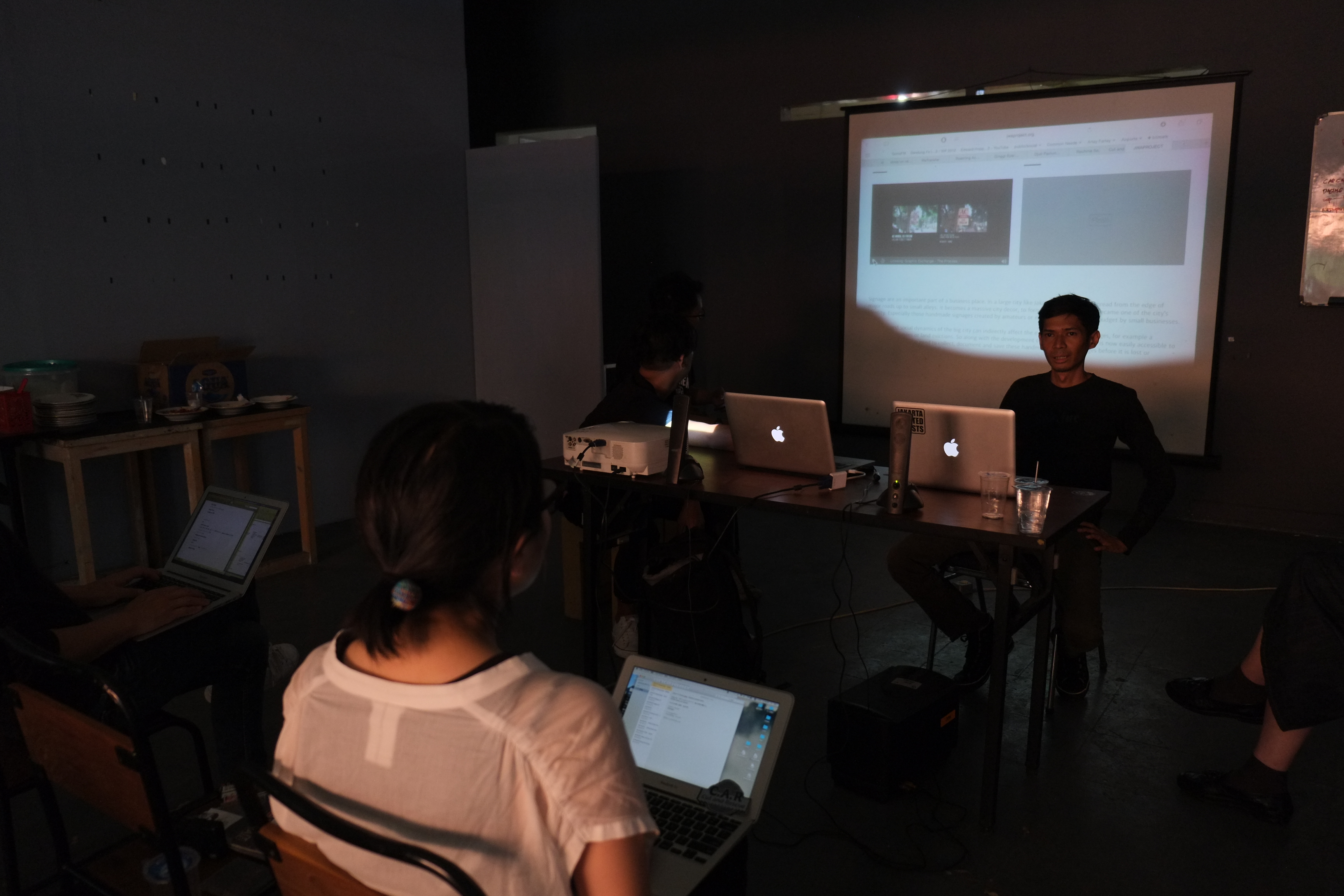
From among the collectives we encountered in Jakarta, I’d like to introduce Jakarta Wasted Artist. In the 2015 work Graphic Exchange, the artists visited stores of various sizes on a street in Jakarta and offered to make them signs. The collective’s members have a variety of different backgrounds in painting and design, and, as they begin working on the designs, they asked the store owners questions such as when the store opened and what inspired them to go into business, etc., which are reflected in the new store signs. In exchange for making the signs for free, the Jakarta Wasted Artists request that they exchange the new sign for the old signs. The old signs and a video recording of the interviews are exhibited as the work, and it serves to archive the operation of family-run stores and the scenery of these neighborhoods which are gradually being lost amidst the large cityscape.
Next, I will introduce two collectives we met with in Yogyakarta. First, Ace House Collective that was established in 2011. By using the pop culture of the young people, it is aiming for a wide-ranging approach to contemporary art. In a project called “Ace Mart”, the gallery space was decorated to look like a convenience store, and they made it function as a store that actually conducted sales. By selling everyday necessities and art objects at the same time, it was an attempt to break the border between art and everyday actions. It is a project that aimed to get people more involved with art and to engage with the community by maximizing the potential of art.
The other is a collective called XXLAB formed only of women. Even in Yogyakarta, a hub for art, the fact is that there are fewer female artists than male ones. These women also come from a variety of different backgrounds; designers, programmers and such come together to form the collective. Rather than simply engaging in arguments about gender and feminism, their projects think about being a woman from various perspectives. They use open source software and assemble everyday materials that are found in any household to produce works. For example, in a project titled “Soya C(O)U(L)TURE”, they focused on the water contamination caused from the drainage water that occurs when making tempeh, the Indonesian soybean product. They made dresses using the thin, tissue-like material made from that drainage water which won them an award at Ars Electronica*, and they said their hope was for it to lead to a social movement that would draw attention to water contamination.
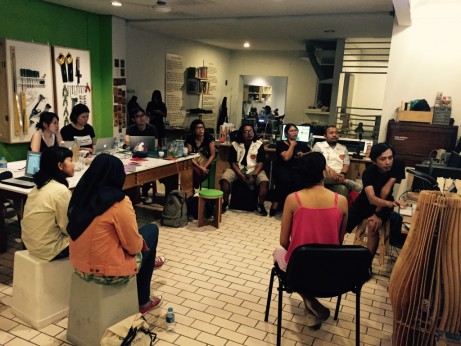
Lastly, I will introduce two more collectives from Srabaya. First one is WAFT Lab. “Waft” means to flutter softly, and I felt that their artistic engagements have a very relaxed feeling that can be considered extremely Indonesian. They are a collective that produces art works using materials such as electronic devices and also holds events. Surabaya has a famous market for electronic parts, similar to Akihabara, and it has an enormous influence on their activities. The works they displayed in the Biennale Jatim were based on the theme of the relationship between human bodies and devices. Inspired by Prestin, a gene inside the ears that adapts sound and which is said to be what allows us to hear, the work was made so that it changes the sound it produces as people interact with it.
Another collective isC2O, which is also the name of the space. It also has a second-hand bookstore and a gallery space, and when we visited they were holding an art exhibit. Most Indonesian people use cars or motorcycles for transportation, while, in Japan, we are mostly familiar with walking on foot. But in Indonesia, especially Surabaya where it is extremely hot, walking is not a mode of action that is familiar to people. With this in mind, they were conducting an experiment where they seek to better understand their town through the basic action of walking around the city of Surabaya.
So far I have introduced several collectives, but there are many others that exist besides these, and some artists are members of more than one. There are collectives where the members rent a house together and use it as a studio while also living there. For these artists, art and life are integrated into one, and I felt that they have a common desire to share that not only with people involved in art but with more diverse communities. It was very interesting that socially engaged art which is drawing attention now is being exercised in the most natural and habitual manner in Indonesia.
*Ars Electronica : A worldwide celebration of media art. It is held every year in Linz, Austria.
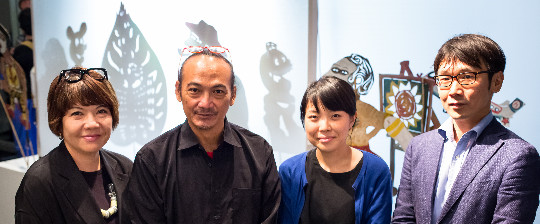
Photo: Shinichiro Mikuriya
Photo Courtesy: Mori Art Museum
